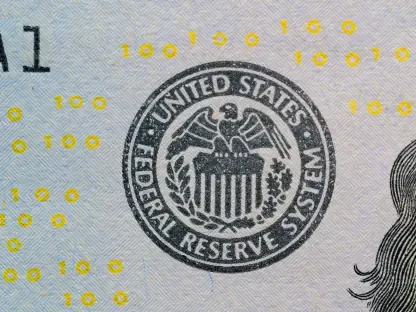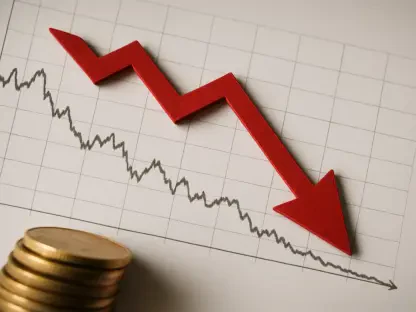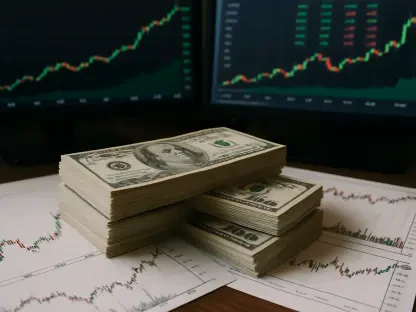As we approach 2025, the financial world is abuzz with speculation about the future of the U.S. Treasury (UST) 10-year yield. The possibility of it reaching the 5% threshold is a topic of significant interest among investors, economists, and policymakers. This article delves into the factors influencing the yield, provides historical context, and highlights future economic and policy projections that could impact long-term Treasury rates.
Historical Context of UST 10-Year Yield
Understanding the trajectory of the UST 10-year yield requires a look back at its historical trends. Over the past 30 years, the yield has experienced significant fluctuations, influenced by various economic events and policy decisions. Notably, periods such as the financial crisis of 2008 and the pandemic in 2020 caused substantial deviations from the norm. During the financial crisis, the yield plummeted as investors flocked to the safety of government bonds. Similarly, the pandemic period saw a dramatic drop in yields due to economic uncertainty and aggressive monetary easing by the Federal Reserve (Fed). These outliers provide valuable lessons but also highlight the importance of considering a broader historical range when projecting future yields.
Examining historical trends reveals that prior to these crises, the UST 10-year yield typically oscillated within a more stable range, reflecting long-term economic growth and inflation expectations. For instance, the yield hovered around 4-5% during much of the 1990s and early 2000s, a period characterized by relative economic stability and moderate inflation. This historical baseline suggests that, barring unforeseen economic shocks, a similar range could be within reach as the economy stabilizes post-pandemic. Additionally, the historical response to economic downturns—marked by Fed interventions and shifts in investor behavior—provides insight into how future monetary policy and economic developments might influence yield movements. Understanding this historical context is crucial for investors and policymakers as they navigate the potential trajectory of the UST 10-year yield towards 2025.
Macroeconomic and Fed Landscape
The current and projected economic environment plays a crucial role in shaping the UST 10-year yield. As we move towards 2025, expectations of modest economic growth and a bumpy inflation recovery are prevalent. These conditions create an environment conducive to a higher yield threshold. The Federal Reserve’s policies are central to this discussion. The Fed’s approach to interest rates, particularly the Fed Funds Rate, directly impacts long-term Treasury yields. Historically, the spread between the Fed Funds Rate and the UST 10-year yield has averaged around +130 basis points (bps). This spread serves as a critical indicator for future yield movements, suggesting that if the Fed maintains a steady rate, the UST 10-year yield could trend higher.
Considering the current economic projections, the Fed’s stance appears to be one of cautious optimism. With steady, albeit uneven, inflation improvements and a moderated economic growth outlook, the possibility of reaching or exceeding the 5% yield by 2025 seems plausible. The interplay between steady rate adjustments by the Fed and market expectations for inflation will be pivotal. If inflation stabilizes and growth picks up in line with projections, the upward pressure on long-term yields may intensify. Furthermore, the ongoing analysis of labor market strength, consumer spending patterns, and global economic trends will shape the Fed’s policy decisions, thereby impacting Treasury yields. As policymakers weigh these economic indicators, their actions will be instrumental in guiding the UST 10-year yield trajectory over the next few years.
Fed Funds Rate and UST 10-Year Yield Spread
The relationship between the Fed Funds Rate and the UST 10-year yield is a key factor in understanding potential shifts in Treasury rates. Historically, the average spread of +130 bps has provided a reliable benchmark for projecting future yields. This spread reflects the market’s expectations of economic conditions and the Fed’s monetary policy stance. As we look ahead, the Fed’s modest rate cuts combined with steady inflation improvements support the possibility of the UST 10-year yield reaching or slightly exceeding the 5% mark. The historical average spread suggests that even with moderate economic growth, the yield could rise significantly from its current levels.
Examining the implications of this spread further, it becomes evident that investor sentiment and market dynamics play a crucial role. When the Fed opts for a modest rate cut, market participants often interpret this as a sign of confidence in the economy’s resilience. This, in turn, can drive demand for long-term Treasuries, pushing yields higher. Conversely, if economic conditions deteriorate or if inflation expectations diverge significantly, the spread might narrow, indicating a more cautious outlook. The historical spread thus serves as a barometer of sorts, gauging market reactions to Fed policy adjustments and economic indicators. Investors and analysts closely monitor this metric to forecast yield movements, making it a critical component in the broader discussion of the UST 10-year yield reaching 5% by 2025.
Yield Curve Dynamics
The dynamics of the Treasury yield curve offer valuable insights into the future of long-term rates. Recently, the yield curve has moved from an inverted state to positive territory, signaling potential changes in investor sentiment and economic outlook. An inverted yield curve, where short-term rates are higher than long-term rates, often precedes economic slowdowns. Conversely, a positive yield curve indicates expectations of future economic growth. The recent un-inversion of the yield curve suggests a more optimistic outlook for the economy, which could drive long-term yields higher. This transition, coupled with the Fed’s policy stance and economic projections, supports the case for a rising UST 10-year yield.
Examining yield curve dynamics provides further depth in understanding potential yield shifts. When the curve shifts from inversion to positive, it typically reflects renewed investor confidence in long-term economic prospects. This shift can lead to increased demand for longer-term Treasuries, pushing their yields up. Additionally, the shape and steepness of the yield curve can offer insights into market expectations for growth, inflation, and Fed policy. A steepening curve often suggests robust economic activity and higher future interest rates. As we move towards 2025, the yield curve’s behavior will be a key indicator to watch. If the curve continues on its positive trajectory, supported by stable economic growth and moderated inflation, the likelihood of the UST 10-year yield reaching the 5% mark becomes more pronounced.
Market Reactions Post-Election
Fiscal policy implications post-election add another layer of complexity to the yield projections. While some measures, such as tariffs, have immediate impacts, legislative actions typically take longer to materialize. The uncertainty surrounding fiscal policies can influence investor behavior and market dynamics, affecting Treasury yields. Post-election developments, including potential changes in tax policies, government spending, and regulatory measures, will play a significant role in shaping the economic landscape. These factors, combined with the Fed’s monetary policy, will determine the trajectory of the UST 10-year yield as we approach 2025.
Adding to the fiscal policy mix is the potential for infrastructure spending and other government initiatives aimed at stimulating economic growth. Such measures can lead to increased government borrowing, impacting the supply of Treasuries and thereby influencing yields. Investor sentiment will be shaped by how these fiscal policies are perceived in terms of their effectiveness and timing. If investors believe that post-election policies will lead to stronger economic growth and higher inflation, demand for Treasuries might decrease, leading to higher yields. Conversely, if policies are seen as insufficient or delayed, investor caution could keep yields lower. The interplay between fiscal decisions and market reactions will be a critical element in the evolving narrative of the UST 10-year yield’s path towards the 5% threshold.
Investor Expectations and Market Sentiment
Investor expectations and market sentiment are crucial in determining the future of the UST 10-year yield. As economic conditions evolve, investors adjust their portfolios based on anticipated returns and risk assessments. The demand for long-term Treasuries, influenced by factors such as inflation expectations and global economic stability, directly impacts yields. Currently, there is a general consensus that the UST 10-year yield could reach or slightly exceed the 5% mark. This outlook is supported by historical trading ranges, economic projections, and the Fed’s policy stance. However, the complexity and uncertainty introduced by fiscal policies and post-election developments add a layer of caution to these projections.
Analyzing how investor sentiment can shift, it’s clear that external economic indicators and geopolitical events also play substantial roles. For instance, global economic stability or instability can lead investors to either seek the safe haven of U.S. Treasuries or move towards higher-risk, higher-return investments. Inflation expectations are yet another vital component. If investors expect inflation to rise steadily, they may demand higher yields on long-term bonds to compensate for the anticipated decrease in purchasing power. Overall, the intricate dance between investor expectations, policy decisions, and economic indicators will continue to shape the trajectory of the UST 10-year yield. As we approach 2025, market sentiment will remain a critical factor in determining whether the 5% threshold will indeed be reached.
Conclusion
As we edge closer to 2025, there’s a growing buzz in the financial sector regarding the future trajectory of the U.S. Treasury (UST) 10-year yield. There’s significant speculation about whether it will hit the 5% mark, a topic garnering keen interest among investors, economists, and policymakers alike.
The potential shift in the 10-year yield hinges on numerous influencing factors. Historical trends play a crucial role in understanding these dynamics, but looking forward, future economic predictions and policy decisions are essential to consider. These long-term projections, coupled with current economic indicators, could profoundly impact the movement of Treasury rates.
Additionally, economic growth rates, inflation trends, investor sentiment, and monetary policies will be key determinants in shaping the yield’s future. As we analyze these elements, the potential implications of a 5% yield come into clearer focus, offering insight into the broader economic landscape that investors and policymakers must navigate in the coming years.








